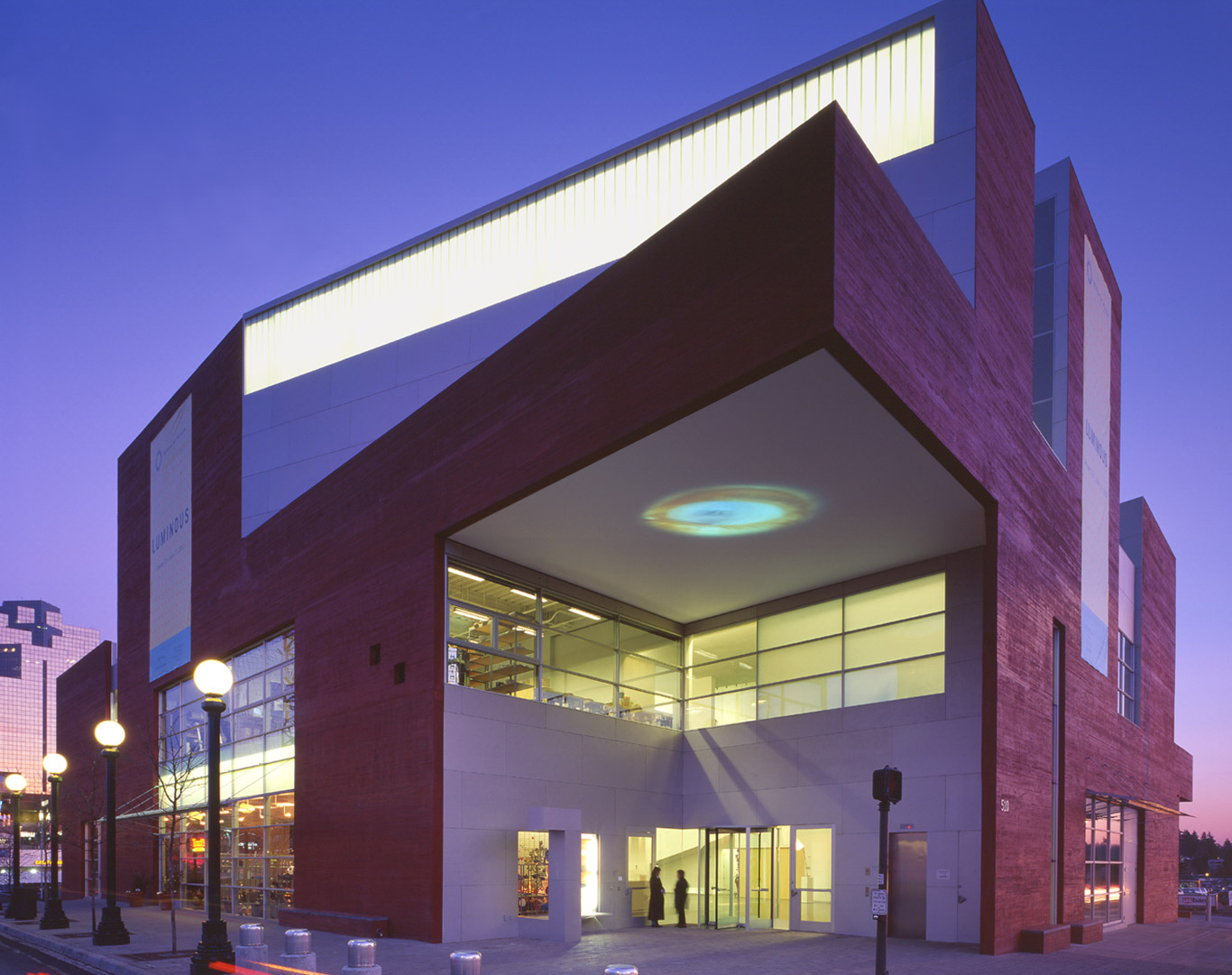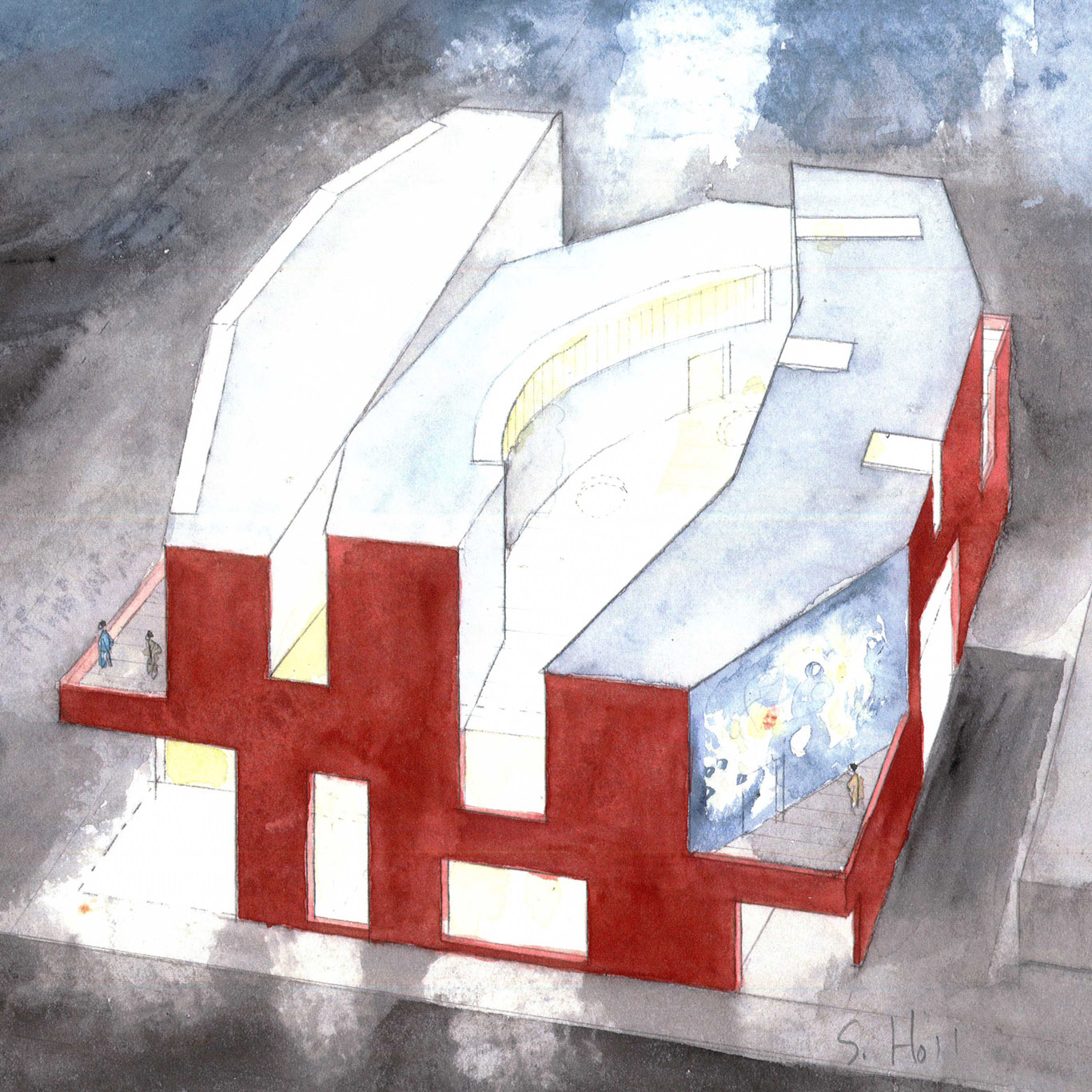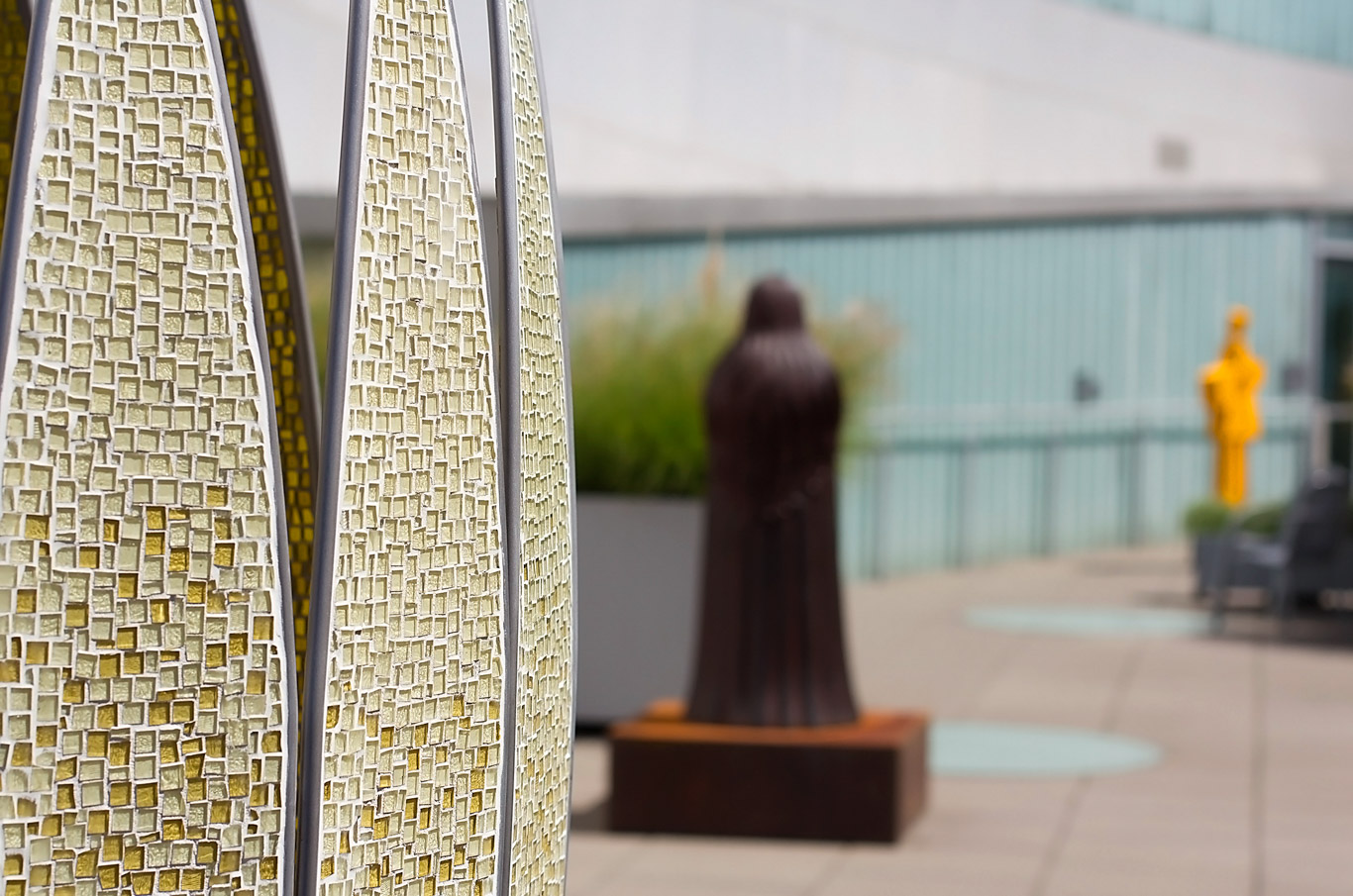History
Bellevue Arts Museum has grown alongside the city of Bellevue to become the Pacific Northwest's center to experience art, craft, and design. With a long history of community engagement, BAM today is home to provocative exhibitions and programs highlighting some of the region's most influential artists as well as international collections.
Land Acknowledgement
Bellevue Arts Museum acknowledges that we are on the Indigenous Land of Coast Salish peoples who have reserved treaty rights to this land, specifically the Duwamish (dxʷdəwʔabš) and Snoqualmie Indian Tribe (sdukʷalbixʷ). We thank these caretakers of this land who have lived, and continue to live, here since time immemorial.
Early Days
In September 1947, Carl Pefley and the Freeman family hosted the first Pacific Northwest Arts and Crafts Fair, an outdoor art fair held at the Bellevue Square regional shopping center. Following the event’s success, Pefley, the Freemans, and a handful of extraordinary volunteers founded the Pacific Northwest Arts and Crafts Association (PANACA), BAM’s parent organization. They had two goals in mind: to promote the artists of the region, and to establish a cultural and educational center serving Bellevue and the greater Eastside.
PANACA oversaw the annual Arts and Crafts Fair, created the Foundation School of Art and PANACA Gallery, and later founded Bellevue Art Museum to accomplish these goals.
The Evolution of BAM Arts Fair
Over more than 70 years, this annual celebration has evolved into a much-treasured Bellevue tradition. The Bellevue Arts Museum Arts Fair today is one of the largest and most prominent festivals in the Pacific Northwest, featuring more than 300 national artists and welcoming hundreds of thousands of art enthusiasts every year.
Learn more about the BAM Arts Fair
A Museum Finds its Home
Bellevue Art Museum, then spelled without the "s" in "Arts," was established in 1975. Since that time the Museum has undergone a series of transformations and experienced an extraordinary amount of growth. The Museum was created when PANACA’s Foundation School of Art moved from its original location in a former schoolhouse to a former funeral home. Following the school’s closure in 1982, the Museum relocated to the third floor of the Bellevue Square shopping center. The Museum finally opened the doors of its first dedicated home in January of 2001; a stunning, red building in the heart of downtown Bellevue designed by renowned architect and Washingtonian, Steven Holl.
Art, Craft, & Design
On June 18, 2005, after extensive research and community feedback, BAM opened its doors with a revitalized mission focused on art, craft, and design and an emphasis on Northwest artists. An "s" was added to "Arts," symbolizing the inclusion of craft and design into its mission. Under the leadership of Michael W. Monroe, an influential figure in American craft for many decades, BAM quickly garnered acclaim for its innovative exhibitions and programs. Monroe retired in 2010 and was named Director Emeritus.
BAM Today
BAM is one of few museums in the nation with a focus on art, craft, and design and fills a unique niche among Northwest institutions. Community involvement continues to be essential to BAM's mission. In 2019, more than 40,000 visitors experienced exhibitions as varied as Robert Williams: The Father of Exponential Imagination and Ron Ho: A Jeweler’s Tale. BAM is also gaining recognition globally. Five BAM-originated exhibitions have traveled to other museum venues across the U.S. and several of the Museum's self-produced publications are now circulated internationally. Bellevue Arts Museum Arts Fair continues to be a core Museum program celebrating its 75th anniversary in 2021.



Architecture
Bellevue Arts Museum is located in the heart of downtown Bellevue where the bold glass, aluminum, and textured concrete structure provides a dramatic presence at the intersection of Bellevue Way NE and the NE 6th pedestrian corridor. The three-story, 36,000 square foot Museum was designed by internationally renowned architect Steven Holl.
Details
Holl made extensive use of glass, terraces, and skylights in his investigation of light, creating a structure that is an artwork in its own right. Roughly a third of the exterior surface is glass, with the remaining two-thirds divided evenly between hand-sanded marine aluminum and textured concrete stained in earth-red tones.
Throughout the building different types of light are utilized to correspond to different concepts of time. The design also focuses on how light comes into the building and how it emanates out to create an interactive beacon of light at night.
Inspired by the Museum's origins as a street fair, large windows at ground level reinforce the Museum's openness to the community. The glass-and-aluminum entryway off Bellevue Way is two-storied and visitors are welcomed into the Museum Forum through a reception lobby. The Forum, an elliptical interior atrium, is at the center of the building and rises two stories. This large, open space serves as a gathering place, a starting point for tours, and a site for special events. A five-foot-wide staircase along the south wall takes visitors to the second floor and 4,000 square feet of gallery space. A suspended stairway along the north wall overhead transports the visitor to the third floor and another 8,000 square feet of gallery space. On the rooftop, the elliptical Court of Light highlights Steven Holl’s interest in the relationship between light and seasonal change. The top of the courtyard's north wall follows the curve of the 48th parallel and allows people to watch the sun trace the arc of the wall during the summer solstice.
In 2005, the Museum was renovated to meet the Museum's new mission as the Pacific Northwest's center for the exploration of art, craft, and design. Three former classroom spaces were given over to gallery space, a vestibule was added to the stairway entry to the third floor galleries, the Museum Store was reorganized for better display and a new track lighting system was installed throughout the Museum to highlight objects. A new color palette and carpeting were used to soften the visitor experience. Modifications to the building underscore the versatility of the design created by Steven Holl.
About Steven Holl
Architect Steven Holl, a Bremerton, Washington native and graduate of the University of Washington, has designed important architectural projects in cities around the world, including the Museum of Contemporary Art in Helsinki, Finland; Cranbrook Institute of Science in Bloomfield Hills, Michigan; American Memorial Library in Berlin, Germany; Nelson Atkins Museum of Art in Kansas City, Missouri; and Fukuoka Housing in Fukuoka, Japan. Holl was awarded a national AIA award for Design Excellence in 1997 for his Chapel of St. Ignatius located on the campus of Seattle University. Holl was also awarded a New York AIA Medal of Honor. His firm, Steven Holl Architects, is located in New York City. Holl also teaches at Columbia University.



